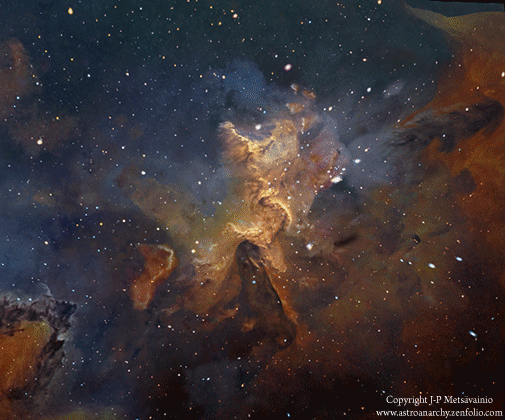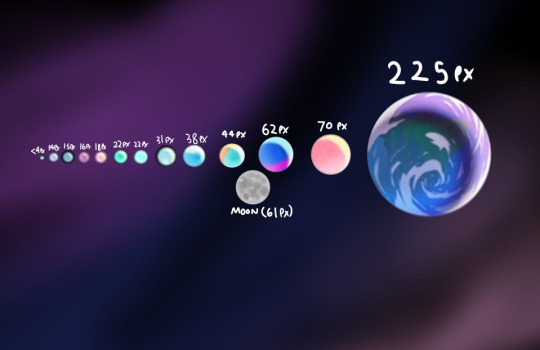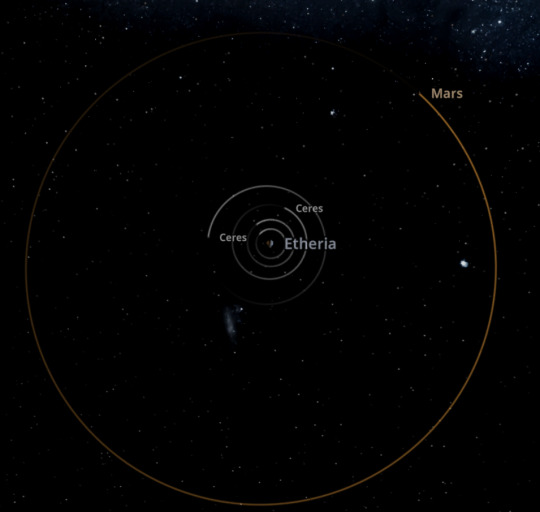#Nebulosity
Explore tagged Tumblr posts
Text
so many of the Bad Takes on gender that i see on this hellsite seem to stem from the assumption that trans women's and trans men's experiences are exact opposites of each other, and that if one of those groups experiences something, the other must not. but there's no reason to assume that! spend enough time talking to trans people in good faith and you'll see that our experiences overlap a ton!
like, a while ago i saw a trans guy on here post something about the ways that being socialized as a girl still impacted him and shaped the way he moved through the world even now that he was living as a man. the notes were full of people accusing him of transmisogyny, on the grounds that he was implying that trans women must therefore be "male socialized" and experience male privilege. but he never said anything of the sort! he just made a factual statement about his own experience and how it's affected him, and it's one i have no reason to doubt him on. plenty of other transmasc folks i've known have described similar experiences.
and here's the thing: everything he described as an example of female socialization is something that i, as a trans woman, have directly experienced. some people might read that and assume that i'm saying trans men don't experience those things, but that's not what i'm saying at all. i'm saying we both do, and that there's no contradiction in acknowledging it! our experiences of gender are complex and can't be boiled down to "trans men experience x, trans women experience y". and i think we as a community would get a lot farther if we were more willing to acknowledge this complexity and the fact that we have so much in common.
12 notes
·
View notes
Text
i started writing a short story about this a while back, where the anthropomorphic Pluto's recategorization was a metaphor for gender transition. i should see if i can find it and polish it up!
the thing about the godawful "pluto will always be a planet IN MY HEART UnU" narrative is. why does this hypothetical anthropomorphic Pluto want to be a planet
like if i'd never fit in with all the other planets no matter how hard i tried and then someone finally realized "hey! its not fair to hold you to the standards of something you aren't! we know what you are now! we understand you better, you never have to be labeled as something you're not again!" that would be like the happiest ending possible
like science isn't nostalgia its constantly changing as we learn more and more about how the universe works, and change isn't always bad
but also like i fail to see how this is sad for pluto
4K notes
·
View notes
Text
currently reading apostolos n. athanassakis's translation of the orphic hymns, along with his extensive notes on them. i'm struck by how many extremely specific syncretisms that i'd thought were original to modern paganism, particularly to wicca, actually have a precedent several centuries earlier in orphism. i wonder if gardner and valiente, or any of their contemporaries, were aware of this, or if the parallels were entirely due to coincidence/revelation (pick your preferred narrative)?
3 notes
·
View notes
Text

Seeing a nebula in 3D
275 notes
·
View notes
Note
a lichen is a very small ecosystem
Whats a lichen if not a plant
(Note: writing this response with Capitals™ bc its long and kind of hard to read otherwise, I’m trying to do that more with my longer posts)
Either an ecological event or a superorganism, depending on how you look at it.
To explain this. like. we do not ‘know’ what a lichen is. We know like, what they are, or at least we’re getting increasingly closer to finding out everything that makes up a lichen, but lichenologists have really struggled to define it as like, A Sole Thing. Botanists and mycologists of the past thought lichens were primarily fungi, because when you dried one out and weighed it, most of the dry weight was fungus; this is why today we still name lichens based on their fungal components, while it turns out that the give and take of all organisms in a lichen are pretty much equal.
It’s a symbiotic relationship, we’ve known that for a long time, but now we know, for instance, that some fungi can pair up with different species of algae to make different lichens. How can we reliably name something after it’s fungus if that fungus can pair up with different things to make multiple different ‘species’? And as of 2016 we know that lichens can have up to four different players: a fungus, an algae, a yeast, and (in some families) a second fungus, previously thought to be parasitic on the lichen itself.
I will personally argue that lichens are an ecological event. To me, this theory gets down to lichen reproduction, which is….completely off the shits.
Lichens can reproduce in a few different ways, the simplest ones being 1. a piece of lichen breaks off and lands in a fitting environment, creating a new lichen that’s a clone of the mother system, and/or 2. a lichen has special organs that release specially-made ‘mini lichens’ that have the main components packaged together into little ‘spores’ (these organs are called isidia and soridia, and look slightly different), creating a similar result to #1 with a clone of the mother system.
Now, you may be wondering: ‘But lichens have sexual structures. can’t they have like, Lichen Sex™?’. Which. Like. This is where it gets wild, because it ties back to the ecological mystery of how lichens ‘make new lichens from scratch’ so to speak.
The thing is, those sexual structures don’t have the components paired together. They only produce sexually-made spores of the fungus, and if these spores land in the right conditions, they won’t form a lichen, they’ll form a non-lichenized version of that fungus. So, conventionally, as we currently understand it, the way for them to form a new lichen would be for two compatible spores- one algae and one fungus, or like, one algae and one fungus or one yeast, we don’t know how those other components fit into the equation yet– to meet in the right conditions, under which case the pair recognizes each other and starts to spontaneously go down an entirely different developmental path to become a lichen. Keep in mind that lichen and algae spores are like…everywhere in the air and in the world around us, just the majority of them don’t find the proper growing conditions and die, so this does happen enough to make all the lichens we see on a day to day basis.
But. There are agonizing mysteries about this process. For example:
-We do not know how the algae and fungal spores, when they meet, know that they’re compatible in the first place. Like, on a cellular level.
-We do know that after a certain point, the organisms involved are locked into their developmental path. They need to meet at an extremely young age (as spores) to become a lichen. If a mature fungus and a mature algae meet, nothing happens, even if they would have been compatible as spores.
-Science, to my knowledge, still has not yet been able to replicate the ‘lichens being made from scratch’ process in a lab. The spores will recognize each other and start developing on a microscopic level, and then they’ll just….stop developing and die, which is why we can only produce new lichens in a lab by growing sterilized fragments from old lichens. Whether or not we’ve just been like, missing all the ‘ingredients’ and you need a yeast or second fungus or something to finish the process, I have no idea.
In conclusion: Lichens are mysterious soups. Lichens, to me, aren’t a thing that lives, but more like a thing that happens between living things. It’s an event of several different things coming together to proliferate on a tree or a rock or wherever, and they are everywhere, and we do not know everything about what they are or how they work. Some people, again, will call them ‘superorganisms’, which isn’t wrong either, but I personally like to think about them in a weird like…..temporal sense? Idk man they haunt me every day of my life.
5K notes
·
View notes
Photo


Etheria’s moons to dubious scale. The second from the right, the blue & purple one, is about the same size compared to Etheria as the Moon is compared to the Earth.
Probably the first thing I noticed when I watched She-Ra and the Princesses of Power was all the damn moons. I’d seen screenshots and clips of the show taking place on a space ship, so I figured “Brightmoon” was literally the name of a moon. But nope--the Starship Darla wouldn’t make her appearance until much later. Anyway. Despite the unrealistic appearance of the moons in the show, I resolved to Figure Out How They Work Eventually. Here’s some thoughts so far.

I’m unwilling to trust most of these sizes because of perspective effects and because it’s a cartoon. I think probably they’re all smaller than it seems. Obviously the “real” spacing is completely different than in the drawing.
If this image is taken with a telescope, or even a telephoto lens from sufficiently far away, then the original image scale could correspond to the scale of the actual planets.
we only have actual depth information for ONE moon--the blue and purple one in front of Etheria, which means its actual scale relative to Etheria is probably smaller than in the image.
each other moon could be either very large and distant or very small and near to the camera, but the way it looks in some scenes moving towards Etheria suggest that the moons are depicted not much farther or closer from the camera than Etheria itself, so I think taking these as roughly to-scale can serve as a starting point for figuring the rest out.
My progress so far in figuring out how to fit 11 large moons into orbit around one Earthlike planet:

this is only five. Four ceres in a near 1:2:4:8 resonance (such that triple conjunctions are possible, but rare), with that pink moon represented as a Mars-mass world, orbiting about once per month. If I move the Mars out much more, it might not be stable accounting for solar tides. (Etheria does have a sun? right? it’s not entirely clear to me. Does it have a different sun in Despondos than in the Universe? like, Despondos has Just One Sun? Is Despondos’ cosmic background lighting up half the sky? Or did the Etherian Sun come along for the ride through the portals, off-screen? I’m making the assumption that even if there is no real Sun in Despondos, the moon system pre-dated Etheria’s stranding, so it’s still constrained by solar tides.
anyway. the five there. I think I can add more. the Mars can support subsatellites, which I think should be allowed, and I think I can fit in some smaller asteroid-sized moons in low orbits in between the resonant friend quad.

I’m not even close to understanding their geology, yet. I need to have a grasp on their basic physical properties first. But I’m guessing magic and technology are both relevant. One of the three moons of enchantment clearly had cloud banding, not impact craters. it could be terraformed--even if the first one’s tech that terraformed it is gone, perhaps it could still carry an atmosphere for the ~thousand years or so the first ones have been gone?
I wonder if the moons were early test beds for first ones to test magic/tech integration on a planetary scale. (which leads to the dark question of “was there a Heart of the Moon Project?”)
Certainly if the first ones were spacefarers they would have had some infrastructure on the moons.
#SPOP#She-Ra#Etheria#moons#read this post in Entrapta's voice#she-ra spoilers#Etheria doesnt have astronomers anymore but i figure there's still a field of study called something like Lunology--study of the moons.#(and heliophysics if there's a Sun)#(and maybe some kind of cosmology? despondos lacks other stars and planets but it's not actually empty. look at all that nebulosity!)
49 notes
·
View notes
Text
I may be going insane currently but I'm fine
#things will turn out in whichever way the universe wills it#the nebulosity of some uncontextualized decision to be made must be disregarded#without informationit willonly reuslt in an anxiety spiral#my friends are at this point thoroughly exhausted with hearing about this or i would have so quickly been in their inboxes asking#for help so as to igure out what this all means#edit: my recent intensive noticing of angel numbers is not helping me on this#last message sent exactly at a time that indicates positive change and transformation???#and realistically its almost certainly nothing but like. what if it is something? what does it mean? what does it all mean????
2 notes
·
View notes
Note
"Content “creator”? My brother in Christ, God is the only creator I know of."
Very well. Content SUB-CREATOR. Happy?
Well played, anon.
#anonymous#I’m with Tolkien there#still wary of the whole creator/consumer dichotomy#and the nebulosity (per Cate’s words) of this ‘content’#i was really taking a potshot at that whole category/mindset#plus influencer culture
6 notes
·
View notes
Text
also the particular cluster of traits that gets characterized as either "girl autism" or "AFAB autism" isn't exclusive to people who were assigned female at birth. i'm an autistic trans woman and the way my autism has presented has always been more in line with what's supposedly typical for girls/women than for boys/men. i also have adhd and it's the same story there. there's no "boy autism" or "girl autism", and there's no "AMAB autism" or "AFAB" autism – rather, the ways that our neurodivergences manifest, and how much we're expected to mask them, are affected by how we interact with our culture's gender landscape, which in turn is affected by both our assigned and our identified gender, but can't be simply reduced to either of them.
“AFAB autism this..” “AFAB autism that..”
Please STOP. I literally want to BITE you.
AFAB autism isn’t a thing. You’re either high masking or you’re not. You’re either autistic or you’re not. There’s no AFAB and AMAB autism. Stop it. You sound dumb.
I get it, AFAB people are DRASTICALLY underdiagnosed due to the social standards that they are held up to so they mask more. Not to mention that the majority of autism research is done on white boys.
However, that doesn’t give you the excuse to use AFAB autism. IT. ISNT. A. THING.
Instead, use terms such as “autism in AFAB” “how autism affects AFAB” “AFAB and their experiences with autism” etc etc. not “AFAB autism” isn’t a thing. Never will be.
5K notes
·
View notes
Text

[Nebulose.]
0 notes
Text

I wonder what decision they came to...
0 notes
Text
Cygnus, Cygni, Cyg - Cigno tanti nomi e sigle per una costellazione individuabile attraverso Deneb (∝ - alfa Cygni del Cigno), situata sullo spigolo nord-occidentale del grande Triangolo Estivo.
0 notes
Text
equally and oppositely relevant to trans women and trans men
“what did you pretend to be when you were a little girl?” a boy. i pretended to be a boy.
730 notes
·
View notes
Text
lately i've been finding a lot of value in the idea of 'things that exist in the same way that the square root of minus one exists'
like, 'this thing doesn't exist in any physical discernable sense, but the models we use to make sense of the extant world leave a space for it, so what if we imagine a thing with the necessary properties to fill that space, and then see what we can do with it?'
2 notes
·
View notes
Text

Visible vs Infrared These are the "Pillars of Creation" seen by Hubble, in visible light (on the left) and in infrared light by the James Webb Space Telescope, on the right!
#nebulose#astronomy#space#nebula#pillars of creation#cosmos#universe#space exploration#Hubble#James Webb#james Webb Space Telescope#stars#star formation#stelle#night sky
80 notes
·
View notes
Text

The Rosette Nebula is 5,219 light years from Earth, located near one end of a giant molecular cloud in the Monoceros region of the Milky Way Galaxy. The open cluster NGC 2244 is closely associated with the nebulosity, the stars of the cluster having been formed from the nebula's matter. 90 minutes of data
#astronomy#nasa#astronomers#universe#nasa photos#astrophotography#outer space#astrophysics#nasawebb#hubble space telescope#our universe#the universe#astronomy facts#astronomy photography#astrography#nasa astronauts#i love astronomy#astronomy picture of the day#international space station#space science#sky#space exploration#space#space photography#nasa science#science facts#planetary science#science#planetary nebula#rosette
93 notes
·
View notes